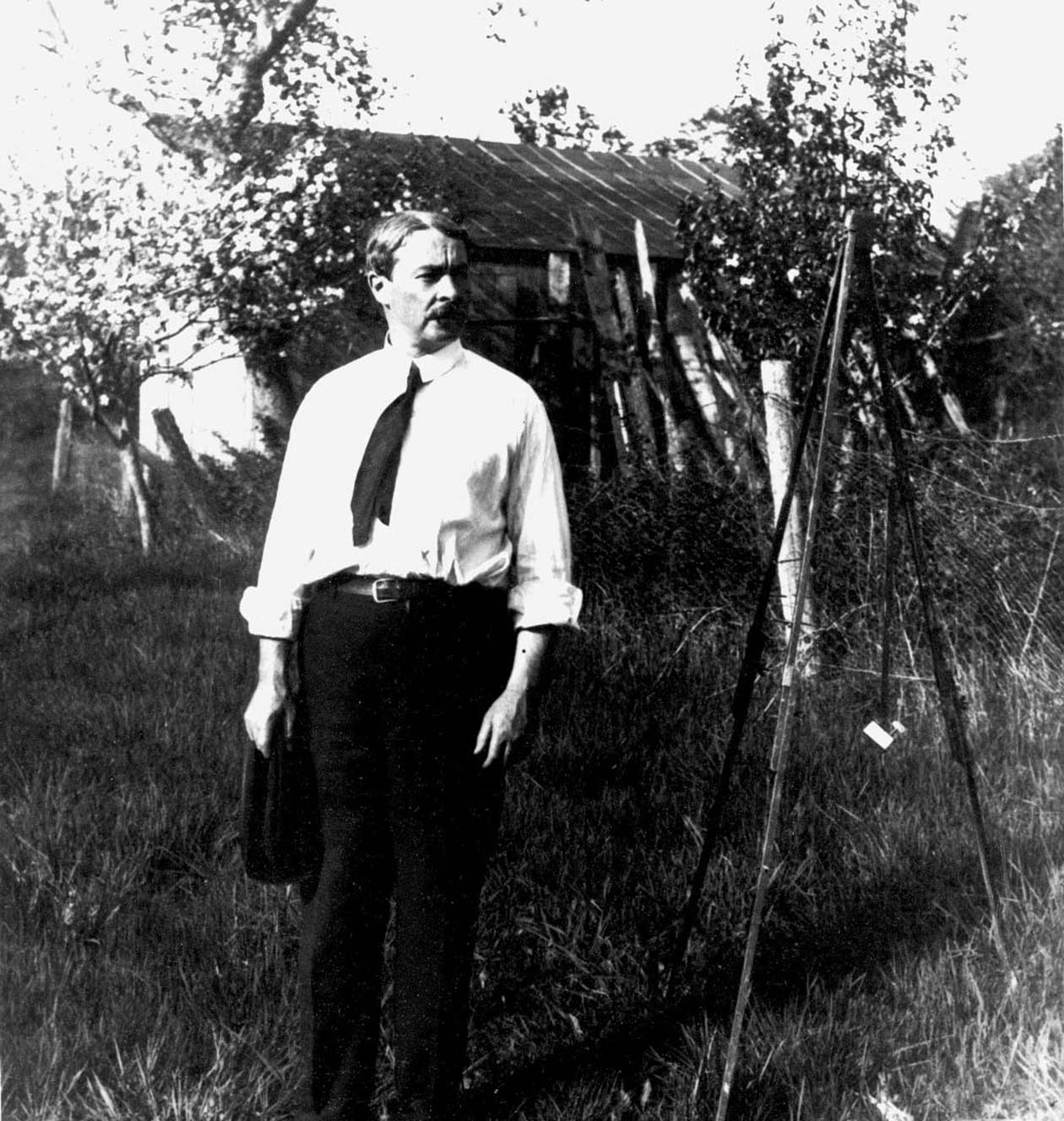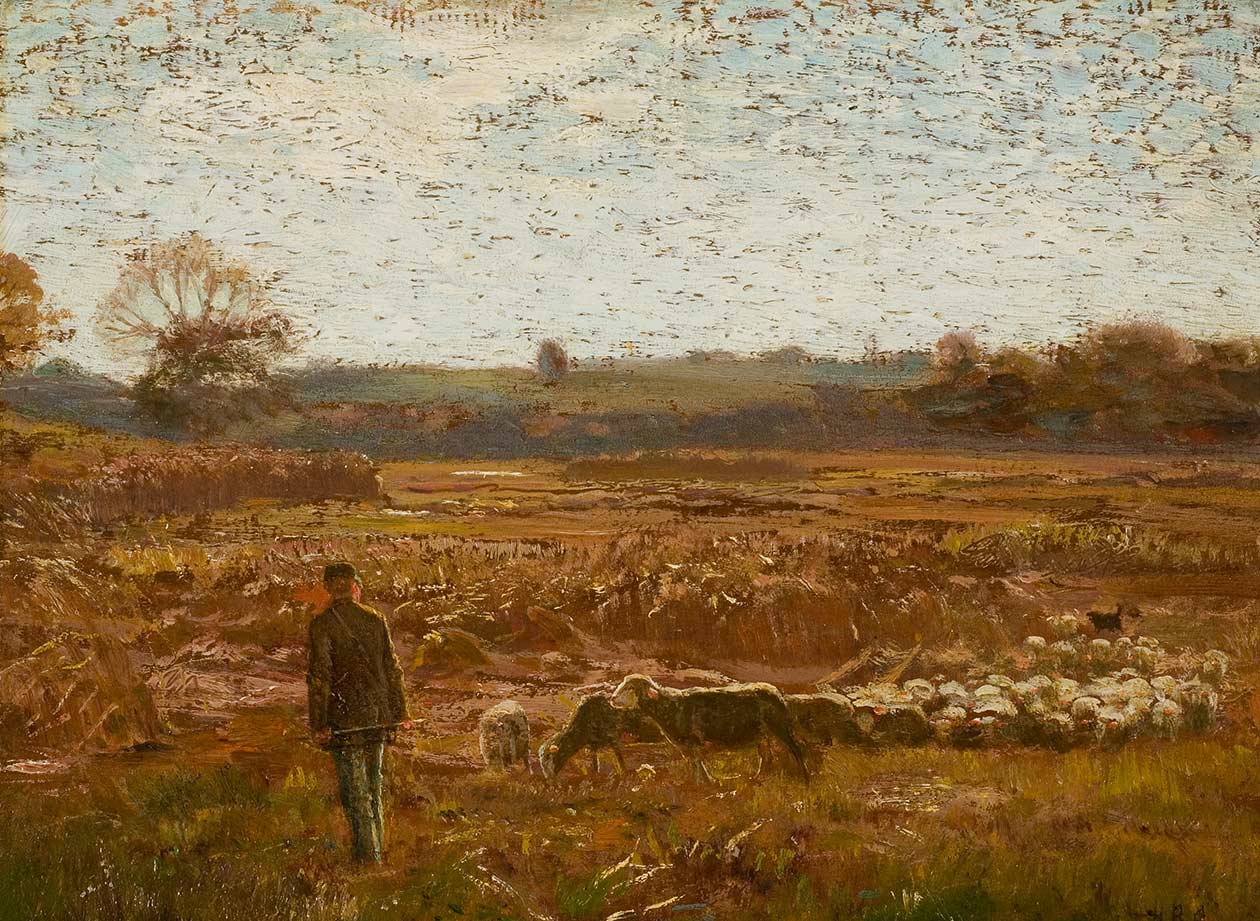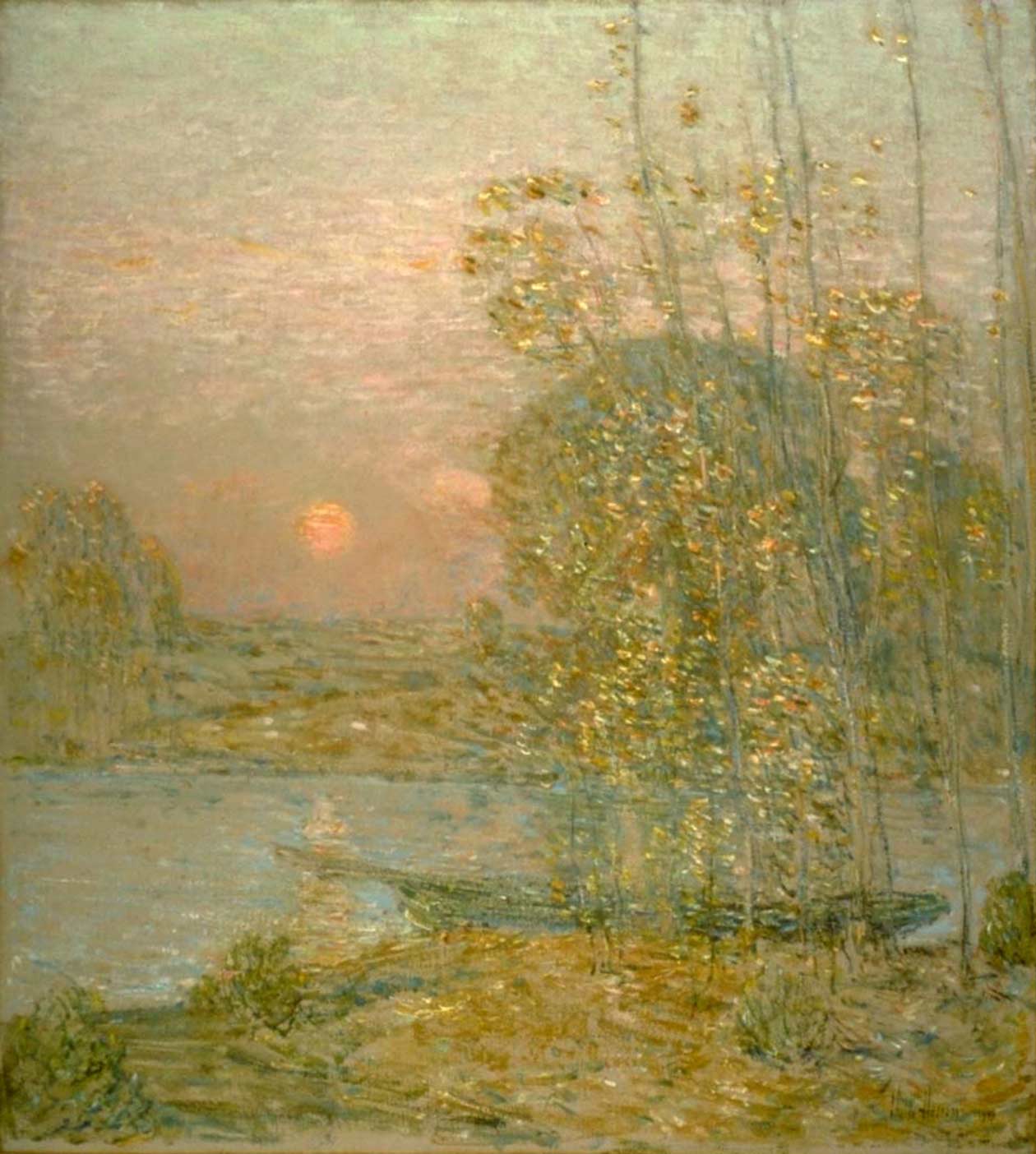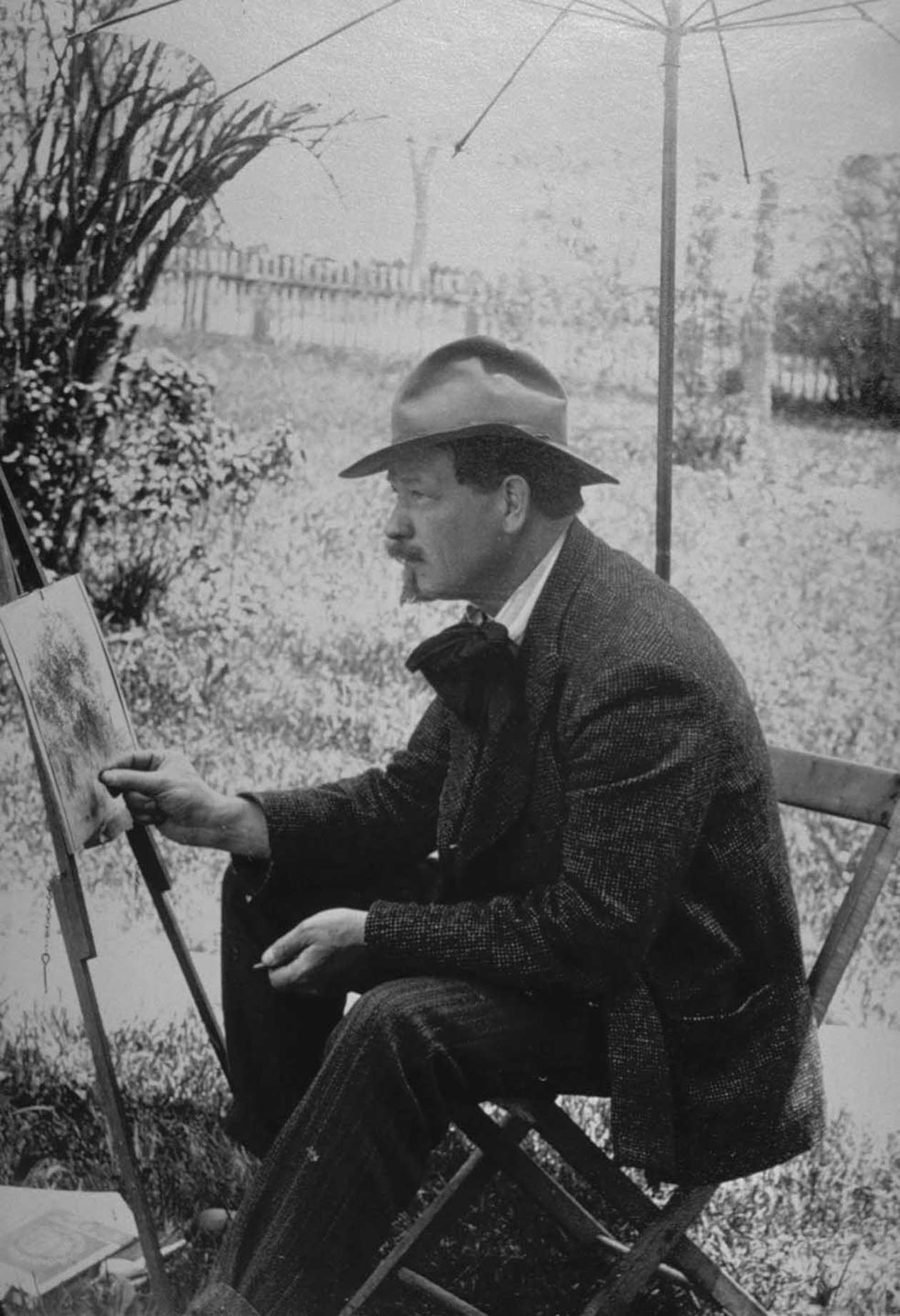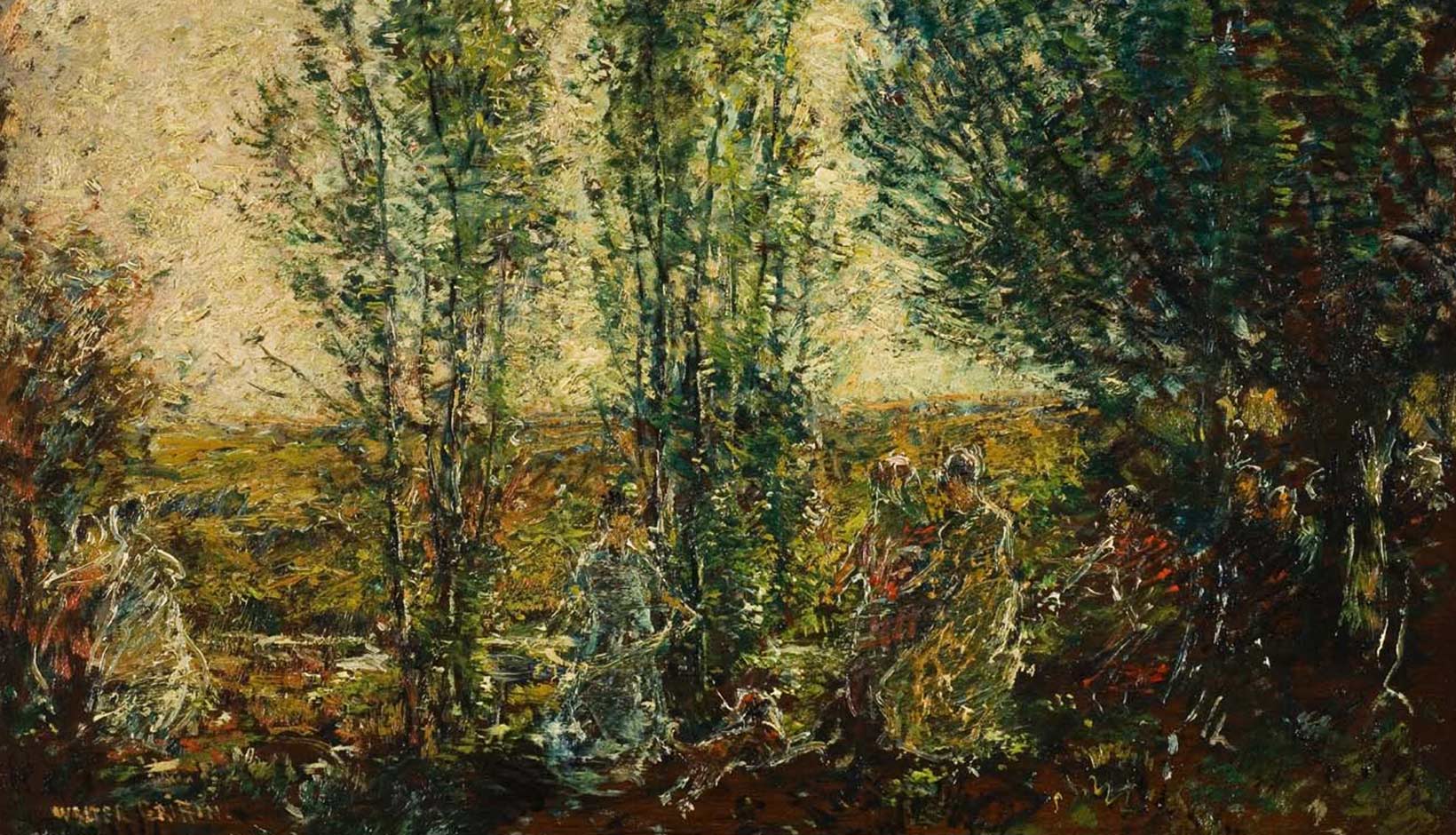Collections
In Situ: The Painted Panel
- Museum Hours: Tuesday through Sunday, 10am to 5pm.
Walter Griffin, Childe Hassam and Henry Rankin Poore (1861 – 1935) (1859 – 1935) (1859 – 1940)
Landscape with Cow
One of the great pleasures and benefits of an art colony, American artists discovered when they became acquainted with some in Europe, was the opportunity to discuss and exchange artistic ideas on a daily basis and to see the stages by which colleagues created works of art. It was serious business.
This panel, however, the collaboration of three men whose distinctive styles are not generally compatible, may have been done as a lark.
Surely it was the Tonalist Henry Rankin Poore who painted the reclining cow. His images of animals were well known; a number grace his Fox Chase mural over the dining room fireplace.
Was Rankin mimicking Glenn Newell’s cow on a nearby panel – a cow of a different color but otherwise very much the same? This one lies not in a Dutch landscape, however, but in Old Lyme, where trees are all around as Walter Griffin found to his joy when he arrived in 1904. Griffin liked tall, thin trees with sinuous trunks and limbs, and in his hands tree leaves can seem to shimmer, partly because of his trick of shaping and modeling foliage with a brush loaded with two colors of paint. The tree at the left is surely one of his and so, probably, are the others.
WALTER GRIFFIN (1861-1935)
CHILDE HASSAM (1859-1935)
HENRY RANKIN POORE (1859-1940)
LANDSCAPE WITH COW, 1907
OIL ON WOOD PANEL
GIFT OF THE ARTISTS

The overlay of short, often parallel strokes in much of the rest of the painting looks like the work of Childe Hassam, a more daring Impressionist than Griffin, and thus the more compelling foil to Poore’s Tonalism.
Hassam brushed dashes of sunlight into this scene, most cleverly above, over, and below the body of the cow, so that they highlight the animal like a spotlight. All three artists used the “baked apple” colors that Old Lyme Tonalists like Poore and Henry Ward Ranger were fond of, but sunny highlights, vibrant greens, and lively brushwork by Griffin and Hassam transport this Tonalist cow into an Impressionist landscape.
The “clash” of two popular ways of painting in Old Lyme and in America at the turn of the 20th century may be overdone here for a humorous effect, but many of the Old Lyme art colonists developed a subtle blend of Tonalism and Impressionism.


